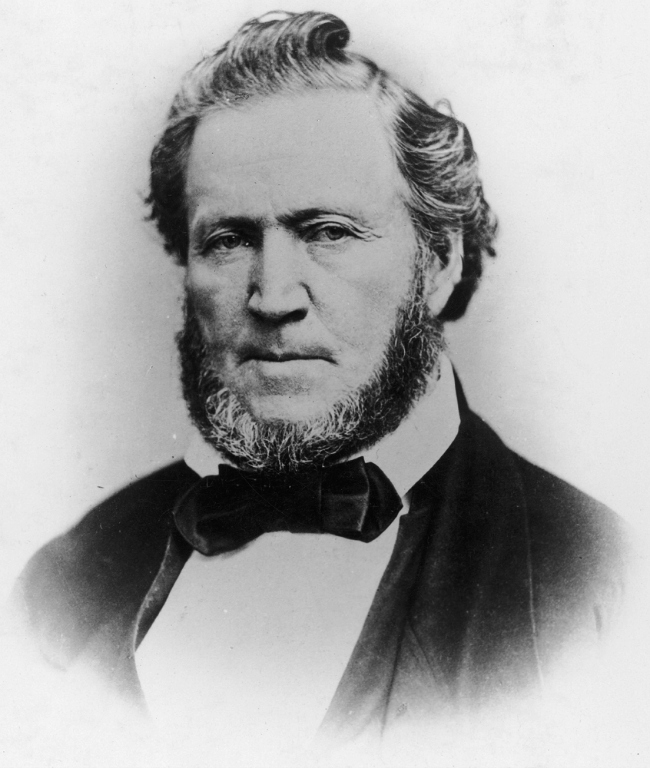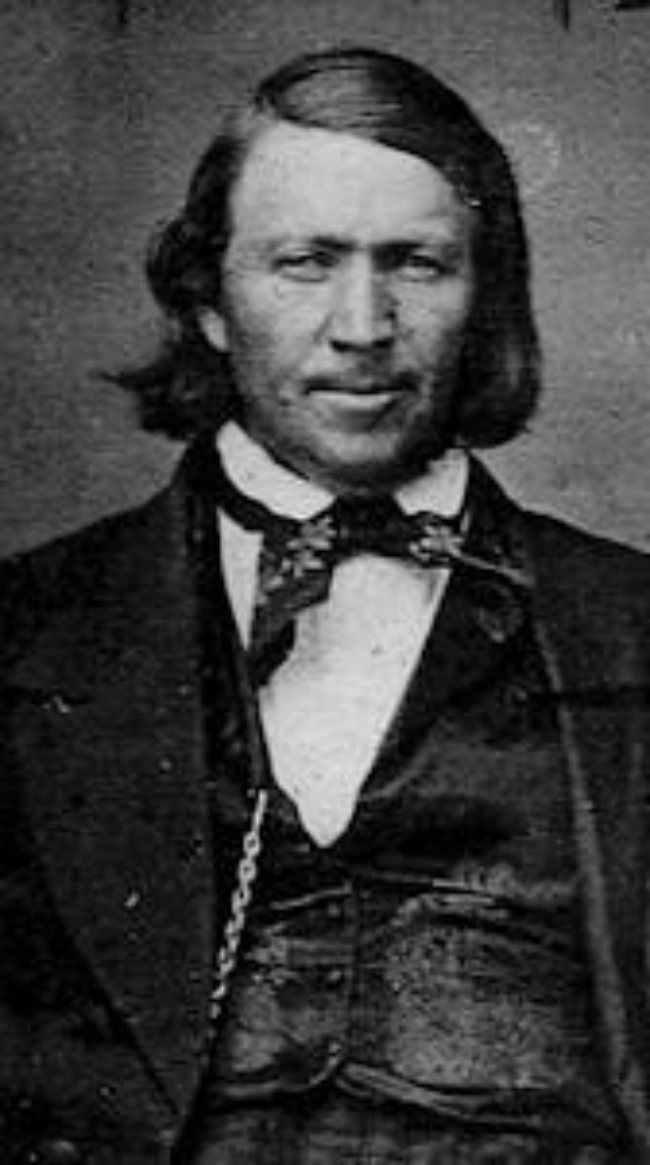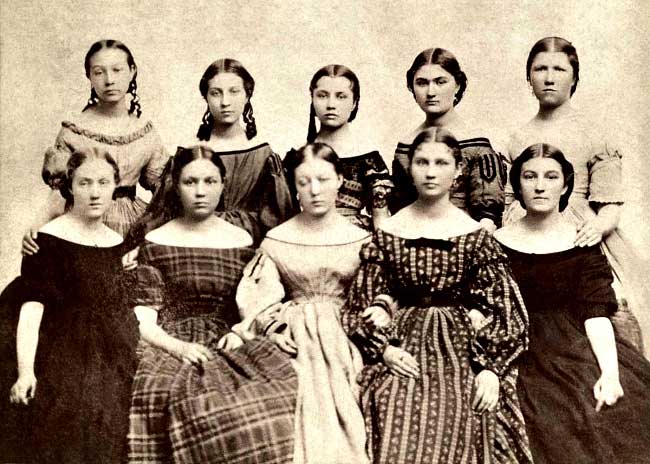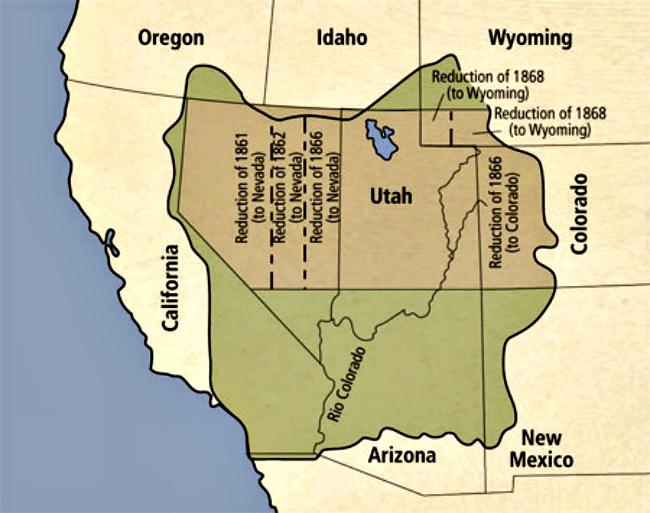Brigham Young’s 213th Birthday: His Life and Ministry
Brigham Young, the second President of The Church of Jesus Christ of Latter-day Saints, is one of the most influential colonizers of the American West, an American Moses. Latter-day Saints fondly referred to him as the “Lion of the Lord” because he boldly declared truth to the world.
Birth and Early Life
Brigham Young was born June 1, 1801, in Whitingham, Vermont, the ninth of eleven children of John and Abigail Young. His family valued industrious work.
“At an early age I labored with my father, assisting him to clear off new land and cultivate his farm, passing through many hardships and privations incident to settling a new country” (Manuscript History of Brigham Young,1).
“Of my mother—she that bore me—I can say, no better woman ever lived in the world than she was. … My mother, while she lived, taught her children all the time to honor the name of the Father and Son, and to reverence the Holy Book. She said, ‘Read it, observe its precepts and apply them to your lives as far as you can. Do everything that is good; do nothing that is evil; and if you see any persons in distress, administer to their wants; never suffer anger to arise in your bosoms, for if you do, you may be overcome by evil’” (quoted in Preston Nibley, Brigham Young: The Man and His Work [1936], 2).
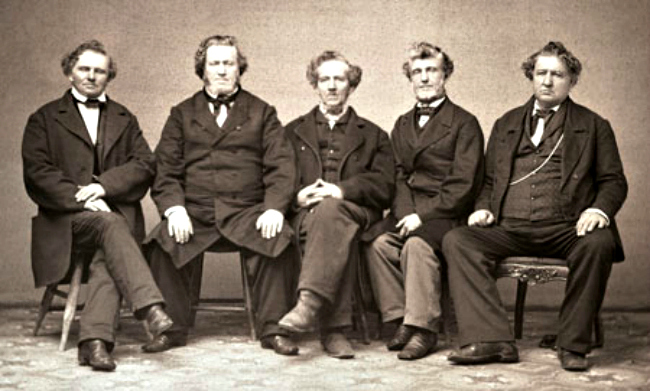
While Brigham Young received only eleven days of formal schooling, his parents taught him to read and write.
“We never had the opportunity of letters in our youth, but we had the privilege of picking up brush, chopping down trees, rolling logs and working amongst the roots, and of getting our shins, feet and toes bruised. … [I]n summer I wore a straw hat which I frequently braided for myself. I learned to make bread, wash the dishes, milk the cows and make butter, and can make butter, and can beat the most of the women in this community at house-keeping. Those are about all the advantages I gained in my youth. I know how to economise, for my father had to do it” (“Remarks,” Deseret News Weekly, Aug. 12, 1857, 180).
“Instead of crying over our sufferings, as some seem inclined to do, I would rather tell a good story, and leave the crying to others. I do not know that I have ever suffered; I do not realize it. Have I not gone without eating and not half clad? Yes, but that was not suffering. I was used to that in my youth. I used to work in the woods logging and driving team, summer and winter, not half clad, and with insufficient food until my stomach would ache, so that I am used to all this, and have had no suffering. As I said to the brethren the other night, the only suffering I ever realized in this Church was to preserve my temper towards my enemies. But I have even got pretty much over this” (“Discourse,” Deseret News Weekly, Oct. 21, 1868, 291).
In 1815, Brigham’s mother Abigail died of tuberculosis. His father remarried, but Brigham determined to leave home and learn a trade. He found an apprenticeship in Auburn, New York, and became a master carpenter, painter, and glazier.
“[H]e established himself as the skilled artisan who is famous in this city [Auburn, New York] for the beauty of his stairwell decorations, fanlight doorways, door frames, stair rails, louvered attic windows and, above all—fireplace mantels” (Mary Van Sickle Wait, Brigham Young in Cayuga County, 1813–1829 [1964], 24).

As a glazier and carpenter, he was particularly responsible for the windows of the Kirtland temple.
He married Miriam Angeline Works in 1824. Brigham and Miriam moved their family to Mendon, New York in 1829. After the birth of their second daughter, Miriam contracted tuberculosis which progressively weakened her until she died in 1832.
“Brigham Young once remarked that after marriage he worked for half a crown a day when he could not get more; got breakfast for his wife, himself, and the little girls, dressed the children, cleaned up the house, carried his wife to the rocking-chair by the fireplace and left her there until he could return in the evening. When he came home he cooked his own and the family’s supper, put his wife back to bed and finished up the day’s domestic labours” (Susa Young Gates and Leah D. Widtsoe,The Life Story of Brigham Young (1930) 5).
Brigham Young married Mary Ann Angell in 1834 after they both moved to Kirtland, Ohio.
Brigham Young participated when Joseph Smith first introduced the Mormon temple ceremony in 1842, and soon afterward Joseph explained polygamy to him. Brigham said, “It was the first time in my life that I desired the grave.” He later accepted the doctrine as God’s commandment and married at least 55 wives, fathering 57 children, 46 of whom grew to maturity.
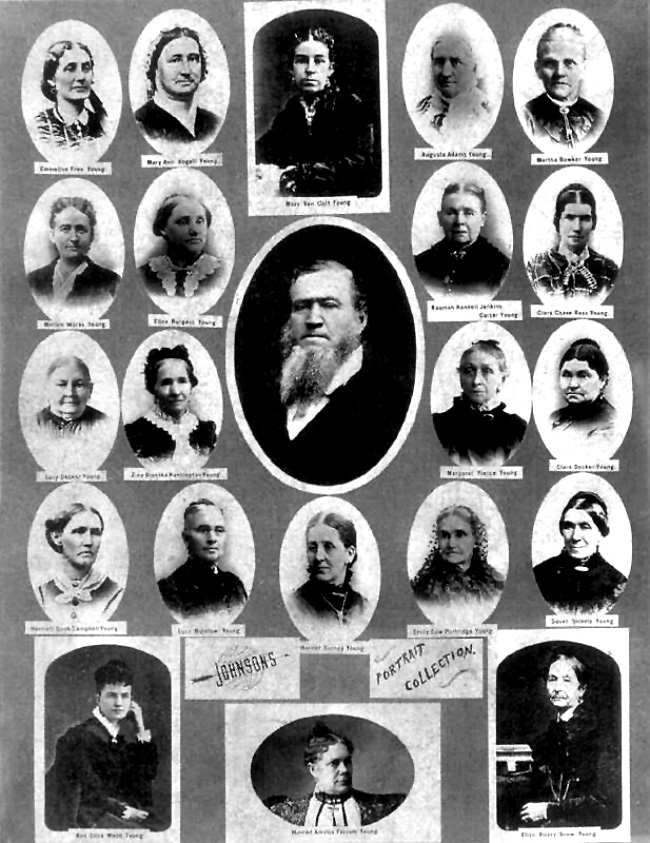
Conversion to Mormonism
“Before I embraced the gospel, I understood pretty well what the different sects preached, but I was called an infidel because I could not embrace their dogmas. … There were some things they preached I could believe, and some I could not. … As far as their teachings were in accordance with the Bible, I could believe them, and no further” (“Discourse,” Deseret News Weekly, July 1, 1874, 340).
In 1830, Samuel Smith sold a copy of the Book of Mormon to Brigham Young’s brother, Phineas. After most of the Young family read the book, Brigham took a turn. He studied the Book of Mormon for 2 years before accepting it as the word of God.
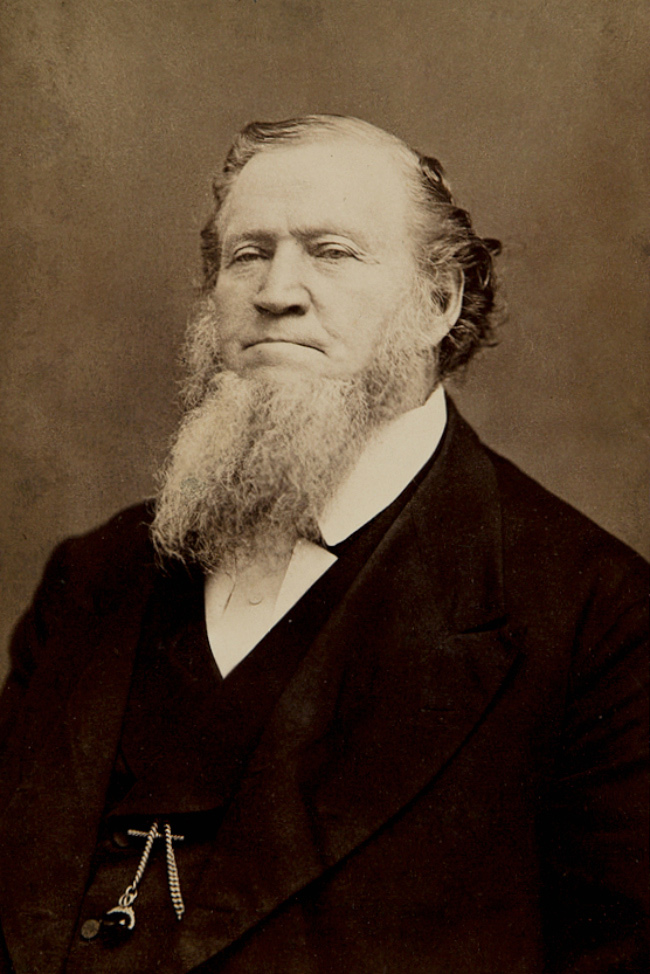
He said that when he received the Book of Mormon his feelings were:
“Wait a little while; what is the doctrine of the book, and of the revelations the Lord has given? Let me apply my heart to them, and after I had done this, I considered it to be my right to know for myself, as much as any man on earth.
“I examined the matter studiously for two years, before I made up my mind to receive that book. I knew it was true, as well as I knew that I could see with my eyes, or feel by the touch of my fingers, or be sensible of the demonstration of any sense. Had not this been the case, I never would have embraced it to this day; it would have all been without form or comeliness to me. I wished time sufficient to prove all things for myself” (“A Discourse,”Deseret News Weekly, Oct. 2, 1852, 96).
Brigham said, “I could not more honestly and earnestly have prepared myself to go into eternity, than I did to come into this church; and when I had ripened everything in my mind I drank it in, and not till then” (“Remarks,” Deseret News Weekly, May 16, 1860, 82).
On April 14, 1832, Eleazer Miller baptized Brigham Young. After his baptism, Brigham wrote “we returned home, about two miles, the weather being cold and snowy; and before my clothes were dry on my back [Brother Eleazer Miller] laid his hands on me and ordained me an Elder, at which I marveled. According to the words of the Savior, I felt a humble, child-like spirit, witnessing unto me that my sins were forgiven” (Manuscript History, 1801–1844, 3).
Thoughts on Joseph Smith
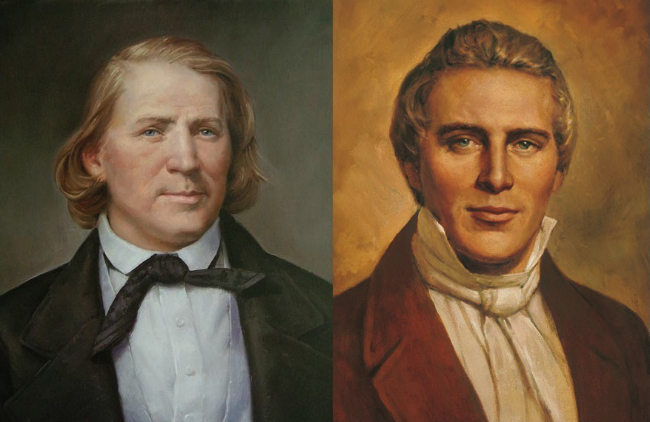
In September 1832, Brigham Young travelled to Kirtland, Ohio to meet Joseph Smith.
“We went to his father’s house and learned that he was in the woods, chopping. We immediately repaired to the woods, where we found the Prophet, and two or three of his brothers, chopping and hauling wood. Here my joy was full at the privilege of shaking the hand of the Prophet of God, and received the sure testimony, by the Spirit of prophecy, that he was all that any man could believe him to be, as a true Prophet. He was happy to see us, and bid us welcome. We soon returned to his house, he accompanying us.” (Manuscript History of Brigham Young, 1801–1844,comp. Elden Jay Watson [1968], 4–5).
“I feel like shouting Hallelujah, all the time, when I think that I ever knew Joseph Smith, the Prophet whom the Lord raised up and ordained, and to whom he gave keys and power to build up the Kingdom of God on earth and sustain it” (Discourses of Brigham Young,sel. John A. Widtsoe [1954], 458).
“In my experience I never did let an opportunity pass of getting with the Prophet Joseph and of hearing him speak in public or in private, so that I might draw understanding from the fountain from which he spoke, that I might have it and bring it forth when it was needed. My own experience tells me that the great success with which the Lord has crowned my labors is owing to the fact of applying my heart to wisdom. … In the days of the Prophet Joseph, such moments were more precious to me than all the wealth of the world. No matter how great my poverty—if I had to borrow meal to feed my wife and children, I never let an opportunity pass of learning what the Prophet had to impart. This is the secret of the success of your humble servant” (“Remarks,” Deseret News Weekly, September 16, 1868, 250).
Overcoming Personal Struggles
Public Speaking – “When I began to speak in public I was about as destitute of language as a man could well be. … How I have had the headache, when I had ideas to lay before the people and not words to express them; but I was so gritty that I always tried my best” (“Remarks, Deseret News Weekly, Aug. 12, 1857, 180).
“I was but a child, so far as public speaking and a knowledge of the world was concerned; but the spirit of the Lord was upon me, and I felt as though my bones would consume within me unless I spoke to the people and told them what I had seen, heard and learned—what I had experienced and rejoiced in; and the first discourse I ever delivered I occupied over an hour. I opened my mouth and the Lord filled it” (“Discourse,” Deseret News Weekly, Aug. 3, 1870, 307).
Apostasy of Friends – During a general spirit of apostasy in 1836, Brigham Young stood nearly alone in defense of Joseph Smith.
“On a certain occasion several of the Twelve, the witnesses to the Book of Mormon, and others of the Authorities of the Church, held a council in the upper room of the Temple. The question before them was to ascertain how the Prophet Joseph could be deposed, and David Whitmer appointed President of the Church. Father John Smith, brother Heber C. Kimball and others were present, who were opposed to such measures. I rose up, and in a plain and forcible manner told them that Joseph was a Prophet, and I knew it, and that they might rail and slander him as much as they pleased, they could not destroy the appointment of the Prophet of God, they could only destroy their own authority, cut the thread that bound them to the Prophet and to God and sink themselves to hell. … The knees of many of the strongest men in the Church faltered.
“During this siege of darkness I stood close by Joseph, and, with all the wisdom and power God bestowed upon me, put forth my utmost energies to sustain the servant of God and unite the Quorums of the Church” (Manuscript History, 1801–1844, 15–17).
“On the morning of December 22nd [1837], I left Kirtland in consequence of the fury of the mob and the spirit that prevailed in the apostates, who had threatened to destroy me because I would proclaim, publicly and privately, that I knew, by the power of the Holy Ghost, that Joseph Smith was a Prophet of the Most High God, and had not transgressed and fallen as the apostates declared” (Manuscript History, 1801–1844, 23).
Elements – In September 1839, Brigham Young, so sick he could not walk far without help, left his family to serve a two-year mission in England. While traveling on a steamboat on Lake Erie from Fairport, Ohio, to Buffalo, New York, a storm arose and hindered the progress of the ship. He recorded, “The wind rose about one o’clock in the morning. I went upon deck and felt impressed in spirit to pray to the Father, in the name of Jesus, for a forgiveness of my sins, and then I felt to command the winds to cease, and let us go safe on our journey. The winds abated, and I felt to give the glory and honor and praise to that God who rules all things” (Manuscript History, 1801–1844, 58–59).
Leaving Family – Brigham recorded how much he missed his family, though anxiously engaged in the Lord’s work. After returning from his mission to England, the Lord gave revealed Section 126 to Joseph regarding Brigham.
“Dear and well-beloved brother, Brigham Young, verily thus saith the Lord unto you: My servant Brigham, it is no more required at your hand to leave your family as in times past, for your offering is acceptable to me. I have seen your labor and toil in journeyings for my name. I therefore command you to send my word abroad, and take especial care of your family from this time, henceforth and forever. Amen” (Doctrine and Covenants 126:1-3.)
Succeeding Joseph Smith
Brigham Young served as a captain in Zion’s Camp, 10 missions to England and throughout the United States, and specifically as an Apostle and then President of the Quorum of Twelve Apostles. Ever faithful to the Lord and His prophet, Joseph Smith, Brigham Young expended every effort in building the kingdom of God.
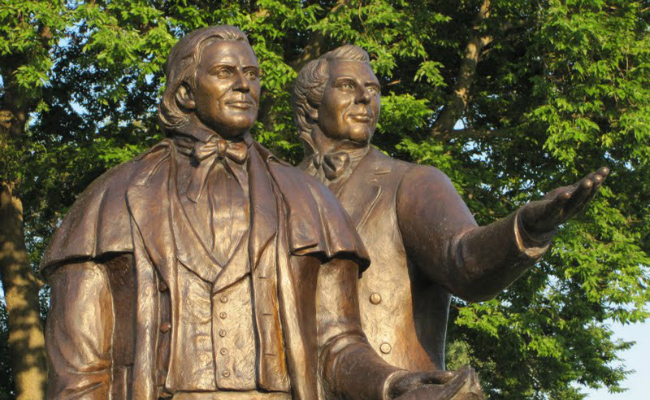
After Joseph’s martyrdom, Brigham and the other members of the Twelve rushed back to Nauvoo. A meeting was called on August 8, 1844, to discuss succession of Joseph.
He recorded,
“I arose and spoke to the people. My heart was swollen with compassion towards them and by the power of the Holy Ghost, even the spirit of the prophets. I was enabled to comfort the hearts of the Saints” (Brigham Young’s journal 1837–45, Aug. 8, 1844; spelling and punctuation standardized).
The event was actually quite dramatic!
Benjamin F. Johnson wrote of the experience “President Rigdon was called upon to put forth his claim before the people, which he did, and after his closing remarks, which were void of all power or influence, President Brigham Young arose and spoke. I saw him arise, but as soon as he spoke I jumped upon my feet, for in every possible degree it was Joseph’s voice, and his person, in look, attitude, dress and appearance was Joseph himself, personified; and I knew in a moment the spirit and mantle of Joseph was upon him” (My Life’s Review [n.d.], 104).
Wilford Woodruff recorded, “If I had not seen him with my own eyes, there is no one that could have convinced me that it was not Joseph Smith speaking. It was as the voice and face of Joseph Smith; and anyone can testify to this who was acquainted with these two men” (quoted in J. M. Whitaker, “Priesthood and the Right of Succession,” Deseret Evening News, Mar. 12, 1892).
Brigham Young became President of the Church December 27, 1847.
Westward Migration and Colonization
During his mission to England, Brigham Young organized convert transportation to Nauvoo. This foundational experience proved vital as he endeavored to move thousands of Saints across the plains. Through his expert planning, he became an American colonizer without peer.
Joseph Smith viewed visions of the Saints settling in the Rocky Mountains, and in turn, Brigham received the same revelations and commandment from the Lord. The Lord revealed Doctrine and Covenants 136 to Brigham Young. “The Word and Will of the Lord concerning the Camp of Israel in their journeyings to the West” (Doctrine and Covenants 136:1).
Wilford Woodruff explained that as they exited the mouth of Emigration Canyon, he turned the carriage so that President Young, who was ill at the time, could see the whole valley.
“While gazing upon the scene before us, he was enwrapped in vision for several minutes. He had seen the valley before in vision, and upon this occasion he saw the future glory of Zion and of Israel, as they would be, planted in the valleys of these mountains. When the vision had passed, he said, “It is enough. This is the right place. Drive on”’ [in “Pioneers’ Day,” Deseret Evening News, July 26, 1880, 2].
Despite the monumental endeavor of eventually settling 100,000 Latter-day Saints in the Utah, Colorado, Arizona, Idaho, Nevada, and Wyoming, President Young also contended with President James Buchanan’s Utah War, including the Mountain Meadows Massacre, and the Black Hawk Indian War. He organized public schooling and three universities. He helped to established the transcontinental telegraph and railroad. He began construction of four temples and oversaw the dedication of the St. George Temple in April, 1877.
He returned from St. George in poor health, and spent the summer working in Salt Lake City. He died August 29, 1877.
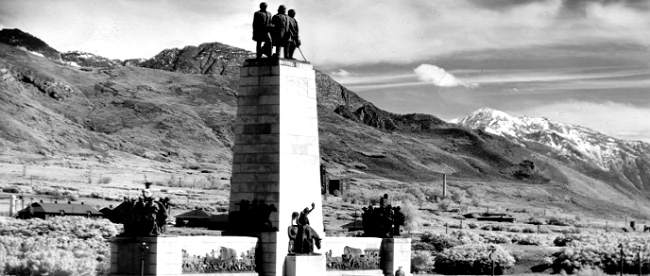
Highlights in the Life of Brigham Young
| AGE | EVENTS |
| Brigham Young was born June 1, 1801, in Whitingham, Windham County, Vermont, to John and Abigail Howe Young. | |
| 14 | His mother died; he began to earn his own living and eventually became a carpenter (1815). |
| 23 | He married Miriam Works (Oct. 8, 1824). |
| 30 | He was baptized into the Church (April 14, 1832) and ordained an elder (1832). |
| 31 | His wife, Miriam, died (Sept. 8, 1832), leaving him to care for their two young daughters. |
| 32 | He married Mary Ann Angell (Feb. 18, 1834). |
| 32–33 | He was a captain in the march of Zion’s Camp (May–July 1834). |
| 33 | He was ordained one of the original members of the Quorum of the Twelve Apostles by the Three Witnesses (Feb. 14, 1835). |
| 37 | He led the Saints from Missouri to Illinois (1838–39). |
| 38–40 | He served a mission to Great Britain (Sept. 1839–July 1841). |
| 38 | He was sustained as President of the Quorum of the Twelve (Apr. 14, 1840). |
| 43–46 | As the senior Apostle, he led the Church after the martyrdom of the Prophet Joseph Smith (1844–47). |
| 45 | He received the revelation recorded in Doctrine and Covenants 136; he saw the Prophet Joseph Smith in vision (Jan. 14, 1847). |
| 45–47 | He led the exodus of the Saints to the Salt Lake Valley (Apr. 1847–Sept. 1848). |
| 46 | He returned to Winter Quarters (fall, 1847); the First Presidency was reorganized (Dec. 5, 1847); he became President of the Church on December 27, 1847, at Kanesville (now Council Bluffs), Iowa. |
| 48 | He founded the University of Deseret (Feb. 28, 1850), which later became the University of Utah. |
| 49 | He became governor of the Territory of Utah (Sept. 20, 1850). |
| 51 | He laid the cornerstone for the Salt Lake Temple (Apr. 6, 1853). |
| 56–57 | The Utah War; he was released as governor after an eight-year term (1857–58). |
| 66 | The Salt Lake Tabernacle was completed; the Union of Local Sunday Schools was organized (1867). |
| 67 | The railroad reached Utah (May 10, 1869). |
| 68 | The Young Ladies Retrenchment Association was organized (Nov. 28, 1869). |
| 75 | The St. George Utah Temple was dedicated under his direction (Apr. 6, 1877). |
| 76 | He died in Salt Lake City, Utah (Aug. 29, 1877). |



